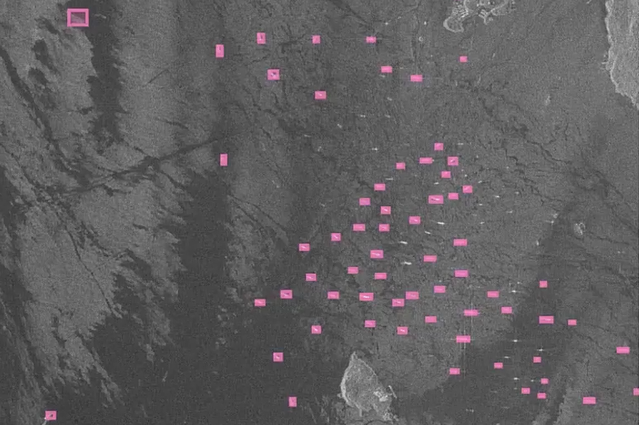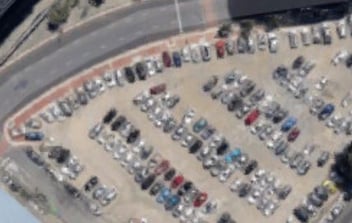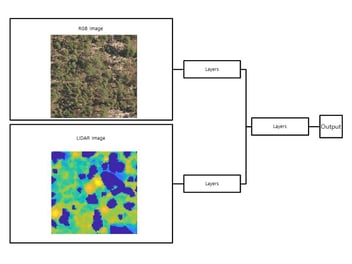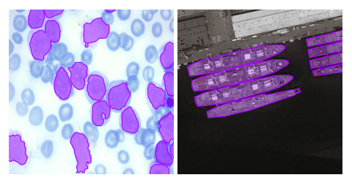Unveiling the Power of Synthetic Aperture Radar (SAR) Images

Discover the fascinating world of Synthetic Aperture Radar (SAR) images and how they revolutionize remote sensing. Join us in this captivating blog post as we delve into the fascinating realm of Synthetic Aperture Radar (SAR) technology. Discover the frequency range of SAR imagery and unlock its vast array of applications.
Understanding Synthetic Aperture Radar (SAR)
Synthetic Aperture Radar (SAR) is a remote sensing technology that uses radar to create high-resolution images of the Earth's surface. Unlike optical sensors that rely on sunlight, SAR can capture images day or night, and even through clouds and rain.
SAR works by transmitting microwave signals towards the Earth's surface and measuring the reflected signals. These signals are then processed to create a detailed image of the target area. The signals are collected by an antenna that moves along a path, creating a synthetic aperture that effectively increases the resolution of the radar.
Understanding SAR is essential for interpreting SAR images. It involves understanding the principles of radar systems, signal processing techniques, and image formation algorithms. SAR images provide valuable information about the Earth's surface, including topography, land cover, and changes over time.
How SAR Images are Created
To create SAR images, a radar system emits microwave signals towards the Earth's surface and measures the reflected signals. The radar antenna moves along a path, collecting data from different angles. This data is then processed using sophisticated algorithms to create a high-resolution image. SAR radar systems are typically installed on aircraft or satellites due to the necessity of antenna movement.
The process of creating SAR images involves several steps, including range compression, azimuth compression, and image formation. Range compression focuses the radar signals to improve the resolution along the range direction. Azimuth compression corrects for the Doppler shift caused by the motion of the radar platform. Finally, image formation combines the processed data to create a coherent image of the target area.
Creating SAR images requires advanced signal processing techniques and computational power. However, the resulting images provide detailed information about the Earth's surface that is invaluable for various applications.
Currently, the field of remote sensing predominantly relies on SAR images captured in the x-band and c-band frequencies.
Advantages and Limitations of SAR Images
SAR images offer several advantages over other remote sensing techniques. First, SAR can operate in all weather conditions, making it ideal for monitoring areas that are frequently covered by clouds or experiencing heavy rainfall. Second, SAR has a high spatial resolution, allowing for the detection of small features on the Earth's surface. Third, SAR can penetrate vegetation and capture information about the underlying terrain.
However, SAR images also have limitations. One limitation is the inability to capture color information since SAR operates in the microwave region of the electromagnetic spectrum. Another limitation is the potential for image distortion due to factors such as terrain topography and the motion of the radar platform.
Despite these limitations, SAR images have proven to be a valuable tool in various fields, including agriculture, environmental monitoring, disaster management, and military surveillance.
Applications of SAR in Various Industries
SAR technology has a wide range of applications across various industries. In environmental monitoring, SAR can provide valuable information about deforestation, land cover changes, and natural disasters such as floods and landslides.
SAR is also used in urban planning and infrastructure development. It can help monitor the stability of buildings and detect subsidence or ground deformation. In the oil and gas industry, SAR images can be used to monitor pipeline networks and detect leaks or unauthorized activities.
Other industries that benefit from SAR technology include maritime surveillance, disaster management, and defense. SAR images provide crucial information for situational awareness, target detection, and mapping of remote or inaccessible areas.
Understanding X Band SAR Images
X band SAR images refer to SAR images obtained using radar systems operating in the X band frequency range, typically around 8-12 GHz. X band SAR offers high resolution and is commonly used for applications that require detailed imaging, such as urban monitoring, infrastructure assessment, and precision agriculture.
X band SAR has the advantage of providing fine-scale detail, making it ideal for detecting small objects or features on the Earth's surface. However, X band SAR may be more susceptible to atmospheric effects and can be affected by rain or foliage attenuation.
Understanding C Band SAR Images
C band SAR images refer to SAR images obtained using radar systems operating in the C band frequency range, typically around 4-8 GHz. C band SAR is widely used for various applications, including land cover mapping, flood monitoring, and maritime surveillance.
C band SAR offers a good balance between resolution and sensitivity to environmental conditions. It provides moderate resolution and is less affected by atmospheric effects compared to higher frequency bands. This makes C band SAR suitable for applications that require reliable and consistent imaging, especially in areas with frequent cloud cover or vegetation.
Future Developments in SAR Technology
SAR technology continues to evolve, driven by advancements in radar systems, signal processing algorithms, and data analysis techniques. Future developments in SAR technology are expected to further enhance the capabilities and applications of SAR imagery.
One area of development is the improvement of spatial resolution, allowing for more detailed imaging and the detection of smaller objects. This can be achieved through the use of higher frequency bands or advanced processing techniques.
However, a challenge arises in this scenario. As image resolution doubles, the image capacity quadruples, following a trend that occurs approximately every two years. This phenomenon is reminiscent of Moore's Law, where as image resolution and capacity increase, the analysis time tends to lengthen, even with advancements in communication technology.
Uncover the cutting-edge machine learning technology of DeepBlock.net, designed specifically for processing ultra-high-resolution SAR images. Experience it for yourself today and witness the transformative power it brings to SAR imagery analysis.
Another area of focus is the integration of SAR with other remote sensing technologies, such as optical imaging or LiDAR. By combining multiple data sources, researchers can obtain a more comprehensive understanding of the Earth's surface and improve the accuracy of various applications.
Furthermore, advancements in machine learning and artificial intelligence are expected to play a significant role in SAR image analysis. These techniques can help automate the process of image interpretation, feature extraction, and change detection, enabling faster and more efficient analysis of SAR data.





